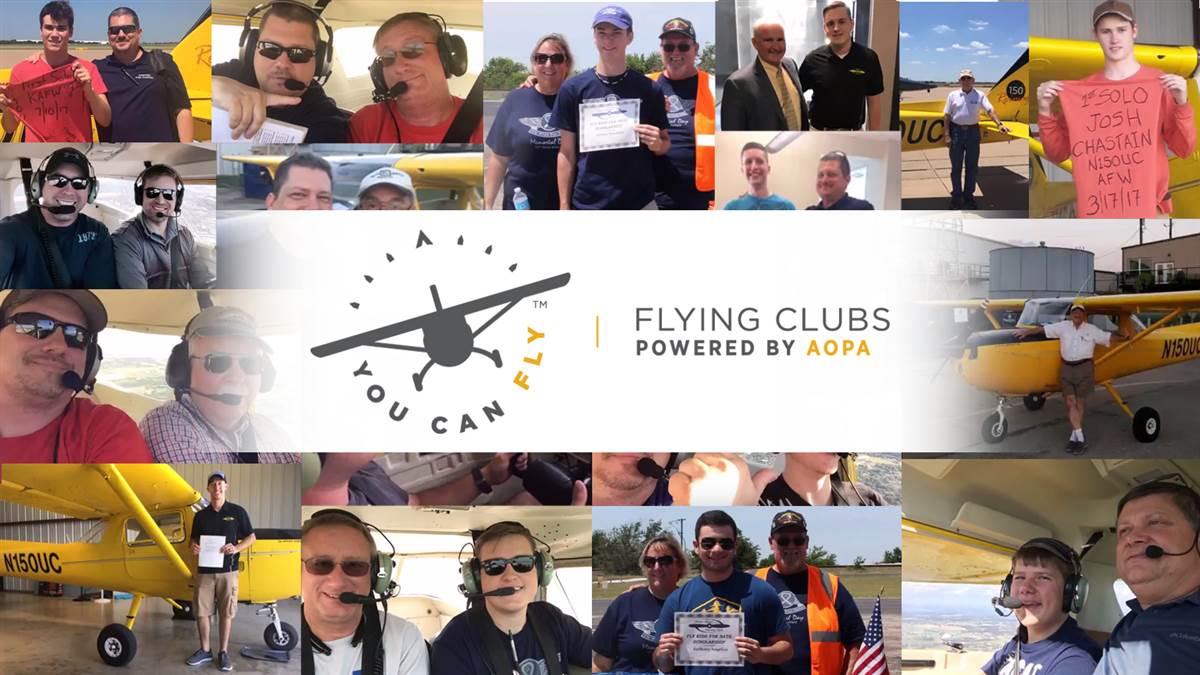Flying clubs opening doors, realizing dreams
When flying clubs thrive, pilots soar.

Whether a flying club provides the means for its members to fly, and a cost-effective way to do so, or offers a supportive and educational backdrop for a prospective pilot’s individual training, aviation is gaining pilots because of their efforts, and news media and the clubs themselves are telling the story.
The pilots of the Nate Abel Flying Club flew out from their home base at Hicks Airfield in Fort Worth to Odessa, Texas; Tulsa, Oklahoma; and even Oshkosh, Wisconsin, for EAA AirVenture.
In 500 hours of flying, the bright yellow Cessna 150, N150UC, that AOPA refurbished in partnership with Aviat Aircraft, reintroducing it as the Reimagined 150, has received a warm aviation welcome whenever it has paid a call.
“Zero Uniform Charlie creates a special buzz wherever we go, catching the eyes and ears of pilots, controllers, and the general public,” said James Smith, a club member and new flight instructor, in a YouTube video produced by club members to thank AOPA for their award.
The 150 Giveaway was made possible through AOPA’s flying clubs initiative, a component of the association’s You Can Fly Program. You Can Fly was launched in 2015 to help make flying affordable and accessible, and to build and support the pilot community.
From EAA Young Eagles program participants to high school students and rusty pilots "with as much as 60 years out of the cockpit," the Nate Abel Flying Club has reached out and touched many pilots, also bringing the joys of aviation to those pilots’ friends and family.
Later in the video, a man in an AOPA cap also says thanks, and shares a bit of his back-in-the-cockpit story. Fred Finch—a “rusty octogenarian pilot,” he says—has become current again in the Cessna 150, and he has flown as pilot in command for the first time in 63 years in the airplane, which was nicknamed “Tweety” by club members.
The Nate Abel Flying Club was named for Nathan Abel, a pilot who died of cancer in 2013. In the video, Nate’s mother makes an appearance, noting that Nate would be “absolutely thrilled with what the club has done in the past year.”
“And I’m thrilled because it keeps my son’s passion and legacy alive. Thank you, AOPA,” she said.
AOPA is gratified by the club’s enthusiasm and progress over the past year, said Katie Pribyl, AOPA senior vice president aviation strategy and programs, adding that the hours flown, training achieved, and membership involvement all demonstrate the impact the You Can Fly Program is having to maintain and grow the pilot population.
If the pilots honoring Nate Abel’s memory with their membership in his namesake club serve as an example of how a flying club can invigorate a local pilot community, another focus for a flying club can be introducing aviation to young people who had no prior access, and nurturing their interest in related academic fields such as science, technology, engineering, and math education.
The Red-tailed Hawks, a five-year-old flying club of the Black Pilots of America in Mukiteo, Washington, north of Seattle, pursues a mission to get youth “fired up about their own lives” and ready to make career choices, founder Jesse Hayes, a Boeing engineer and U.S. Air Force veteran, told NBC News when the network aired a story covering the nonprofit’s work.
Producing pilots would be a plus, but is not the primary goal.
Highlighted in the story—which pointed out that fewer than two percent of pilots are black, and the numbers are even lower among airline pilots—were the accomplishments of new pilot Samantha Carter, 18, and Spencer Brashears, a multi-engine commercial pilot who flies in competitions, holds an aeronautics degree, and has his sights set on further advances.
Such reports, said Pribyl, “are a true indication of how flying clubs are moving the needle in a positive way for the future of aviation.”



